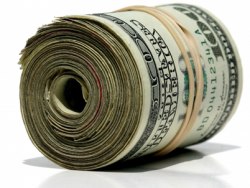|
|

Bankroll Management in PokerBankroll management? Mastering bankroll management is the cornerstone of becoming a profitable poker player. It is frequently said that a good poker player with a bad bankroll management will end up bankrupt, while a mediocre player will excellent bankroll management can thrive for a long time. But what is Bankroll Management in Poker exactly?In poker what is meant by bankroll is the amount of money that you have reserved for playing poker. This is money you can afford to lose, not the rent money. If you are a poker fanatic like us, you should set aside a predetermined amount of money used for poker. You should almost never add to your bankroll, otherwise it reflects a gambling habit more than a sound poker hobby. Next, bankroll management means the level of risk that you are willing to take with respect to your bankroll. For example let us say that your bankroll is $1000 and that you like to play 4 tables of No Limit Texas Hold'em at a time, with a starting stack of 40 big blinds. At what stakes should you play? Let us assume that you have determined that you should never risk more than 4% of your bankroll at a given time, or $40 in this example. That is $10 per table, for a big blind of 10/40 = $0.25. So you should play NL25. Where is this 4% coming from? We explain that in more details in the next section, but for now let us just say that the percentage commonly agreed upon is somewhere between 1 and 5%. Obviously the lower this number, the less chance you have to burn your entire bankroll. 4% is a very conservative level which will protect you most of the time. The reason you only want to risk a small fraction of your bankroll is that if you have a very long bad run of cards and sessions, your bankroll could decrease to zero. As we said earlier, your bankroll should not be replenished freely, so reaching zero is to be avoided at all costs. This is not just failure. This can also create a self-reinforcing downward spiral ignited by tilt which can ruin (no pun intended) your enjoyment as a poker player. Scientific Bankroll ManagementWhere is this 4% coming from? Bankroll management is part art and part science, but there is a statistical theory backing up the methodology that is called "risk of ruin" or "gambler's ruin". Without submerging you with mathematical details, the idea is the following. Imagine that you play head or tail and you have $1000 as your bankroll. This is a fair game so you should neither make nor lose money over the long term. But in the short-term, you could have a bad run. If you bet $500 each time and you lose twice in a row from the beginning, your bankroll could be entirely gone with 25% chance. This is way too high. If you only bet $100 each time, can you lose ten times in a row? Yes there is about 0,1% chance of that happening. Can you lose your bankroll over a session of 1000 bets? This is the so-called risk of ruin. In this case it is less than 1%. So the key to bankroll management is to choose a percentage which gives you a very low chance to loose your entire bankroll. There is no way to completely cancel that chance, but at less than 1% it can give you a good comfort zone. Bankroll Management is an important poker skillWhen should you move up and down in stakes? A simple method is that if you lose half your bankroll, you should go down one limit. This way you will be back to an optimal bankroll level as you will be able to use the 4% rule again. You should find the games easier, so you can progressively regain confidence. In the real worse case where you keep on losing money, if you go down in limit each time you lose half your bankroll, you will never become bankrupt. In contrast, when should you go up in limit? If you double your bankroll, you should give a shot to the next stake level. This is often a very perilous exercise and you may have to try a few times. If you start losing at the higher limit, go back down, rebuild your bankroll and try again. Bankroll management is simple but requires solid discipline. We conclude with another simple bankroll management rule. Getting rakeback and in particular
pokerstars rakeback is the simplest way
to increase your win rate and your bankroll.

|
||||||||||||||||||||||||||||||||||||||||||||||||||||||||||||||||||||||||||||||||||||||||||||||||||||||











